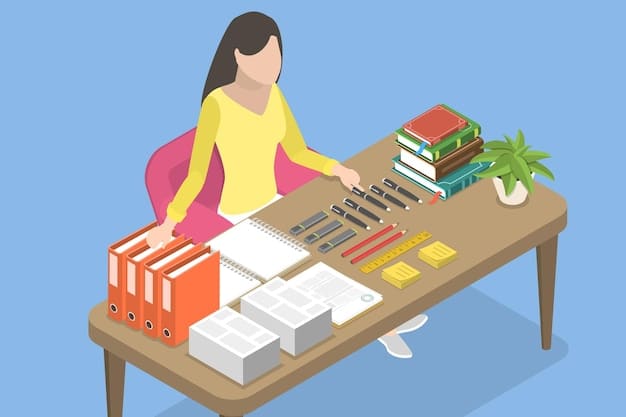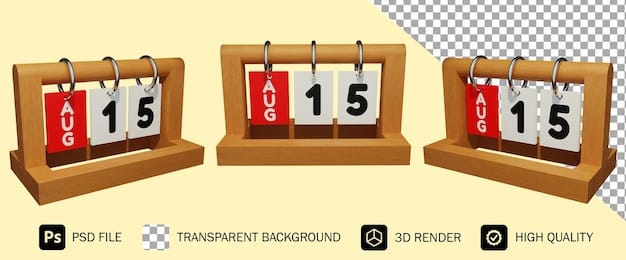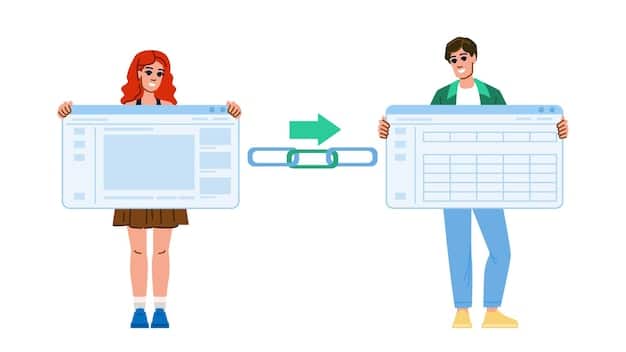Boost Memory by 30% in 2025: The Leitner System Guide

The Leitner System is a powerful spaced repetition technique that optimizes learning by reviewing flashcards at increasing intervals, potentially boosting memory retention by 30% in 2025 through personalized learning and efficient knowledge consolidation.
Struggling to retain information? Discover how can the Leitner System boost your retention by 30% in 2025. This proven method uses spaced repetition to optimize your study sessions and enhance long-term memory.
Unlock Your Learning Potential with the Leitner System
The Leitner System, a simple yet highly effective learning method, has been helping students and professionals alike improve their memory retention for decades. Its core principle revolves around spaced repetition – reviewing information at increasing intervals to reinforce learning and combat the forgetting curve. But how exactly does it work, and what makes it so effective?
In this article, we’ll delve into the intricacies of the Leitner System, exploring its origins, its mechanics, and how you can implement it to achieve a potential 30% boost in your memory retention by 2025. Whether you’re a student preparing for exams, a professional looking to expand your knowledge base, or simply someone who wants to improve their cognitive abilities, the Leitner System offers a practical and proven solution.

The Science Behind Spaced Repetition
At the heart of the Leitner System lies the principle of spaced repetition. This technique, grounded in cognitive psychology, acknowledges that our memory isn’t a fixed entity but rather a dynamic process influenced by various factors, including timing and frequency of review.
Spaced repetition leverages the “forgetting curve,” a concept introduced by Hermann Ebbinghaus, which illustrates the exponential decline of memory retention over time. By strategically spacing out review sessions, the Leitner System helps overcome this natural tendency to forget, allowing for more efficient and durable learning.
Ebbinghaus’s Forgetting Curve
The forgetting curve demonstrates that we lose a significant portion of newly learned information within the first few days if we don’t actively review it. Spaced repetition aims to counteract this by prompting us to revisit the material at the optimal moment – just before we’re about to forget it.
How Spaced Repetition Works
By spacing out review sessions, we force our brains to actively recall the information, strengthening the neural pathways associated with that knowledge. This process not only enhances retention but also promotes deeper understanding and better application of the material.
- Active Recall: Spaced repetition encourages active recall, a more effective learning strategy than passive review.
- Optimal Timing: The system ensures that we review information at the ideal time, maximizing retention and minimizing wasted effort.
- Long-Term Memory: By consistently reinforcing knowledge over time, spaced repetition helps transfer information from short-term to long-term memory.
In essence, spaced repetition is a scientifically validated technique that optimizes learning by strategically timing review sessions to coincide with the brain’s natural forgetting patterns.
Setting Up Your Leitner System: A Step-by-Step Guide
Implementing the Leitner System is surprisingly straightforward. It requires only a few basic materials and a commitment to consistent practice. Here’s a step-by-step guide to get you started:
The system’s setup involves creating a series of boxes, each representing a different review interval. The core idea is simple: flashcards are moved between boxes based on your ability to recall the information on them.
Materials You’ll Need
To set up your Leitner System, you’ll need the following materials:
- Flashcards: Use standard-sized flashcards or create your own using paper or digital tools.
- Boxes: You’ll need at least five boxes, labeled with increasing review intervals (e.g., “Daily,” “Every Other Day,” “Weekly,” “Bi-Weekly,” “Monthly”).
- Dividers (Optional): Dividers can help organize flashcards within each box.
Step-by-Step Instructions
- Create Flashcards: Write a question or concept on one side of each flashcard and the answer or explanation on the other.
- Label the Boxes: Label each box with an increasing review interval (e.g., “Daily,” “Every Other Day,” “Weekly,” “Bi-Weekly,” “Monthly”).
- Start with Box 1: Place all your flashcards in the first box (the “Daily” box).
- Review Regularly: Review the flashcards in each box according to its designated interval.
- Move Cards Accordingly:
If you answer a flashcard correctly, move it to the next box.
If you answer incorrectly, move it back to the first box.

Tailoring the Leitner System to Your Learning Style
One of the great advantages of the Leitner System is its adaptability. You can customize it to suit your individual learning style, preferences, and the specific subject matter you’re studying. There are many ways to personalize the system; one tip is adapting the review schedule, for example.
By experimenting with different variations and incorporating elements that resonate with you, you can maximize the effectiveness of this powerful learning technique and achieve even greater results.
Adapting Review Schedules
The standard Leitner System uses fixed review intervals, but you can adjust these intervals to better match your learning pace and the difficulty of the material. For example, you might choose to review cards in the first box twice a day or extend the intervals between boxes as you progress.
Incorporating Visual Aids
If you’re a visual learner, consider adding images, diagrams, or other visual cues to your flashcards. This can help solidify your understanding of the concepts and make the review process more engaging.
- Mind Maps: Use mind maps to visually organize complex information and create connections between different concepts.
- Drawings and Illustrations: Add simple drawings or illustrations to your flashcards to make them more memorable and engaging.
- Color-Coding: Use color-coding to categorize flashcards by topic, difficulty, or importance.
By customizing the Leitner System to align with your learning preferences, you can transform it into a powerful and personalized learning tool.
Digital Leitner Systems: Apps and Software
In today’s digital age, the Leitner System has evolved beyond physical flashcards and boxes. Numerous apps and software programs offer digital implementations of this technique, providing added convenience, features, and flexibility.
Digital Leitner Systems often incorporate features such as spaced repetition algorithms, progress tracking, and multimedia support, making them even more effective and engaging than their traditional counterparts.
Benefits of Digital Systems
Digital Leitner Systems offer several advantages over traditional physical systems:
- Accessibility: Access your flashcards from anywhere with an internet connection.
- Automation: Spaced repetition algorithms automatically schedule review sessions based on your performance.
- Multimedia Support: Incorporate images, audio, and video into your flashcards.
- Progress Tracking: Monitor your progress and identify areas where you need to focus your efforts.
Popular Apps and Software
Some popular digital Leitner System apps and software include:
- Anki: A highly customizable and powerful spaced repetition program.
- Memrise: A gamified learning platform that incorporates spaced repetition.
- Quizlet: A popular flashcard app with a built-in spaced repetition feature.
Whether you prefer the tactile experience of physical flashcards or the convenience of digital tools, the Leitner System can be adapted to suit your needs and preferences.
Overcoming Challenges and Maximizing Results
While the Leitner System is a highly effective learning technique, it’s not without its challenges. Consistency is the key, as with many learning methods but there are other challenges.
By being aware of these potential pitfalls and implementing strategies to overcome them, you can maximize the benefits of the Leitner System and achieve your learning goals.
Maintaining Consistency
One of the biggest challenges is maintaining consistency with your review schedule. Life can get busy, and it’s easy to fall behind on your reviews. To combat this, try setting aside a specific time each day or week for your Leitner System sessions and sticking to it as much as possible.
Dealing with Overwhelming Information
The Leitner System can become overwhelming if you have a large amount of information to learn. To avoid this, break down the material into smaller, more manageable chunks and focus on mastering one concept at a time.
Tracking Progress and Staying Motivated
Another important aspect is tracking your progress and staying motivated. Use the system or app to its full potential. Visualizing your progress can help you stay motivated and committed to your learning goals.
Consistency, organization, and a positive mindset are essential for maximizing the effectiveness of the Leitner System.
Projecting into 2025: The Future of Leitner
As we approach 2025, the Leitner System is poised to become even more integrated into our learning environments, aided by technological advancements and a growing understanding of cognitive science. Let’s delve into some predicted advancements.
Advancements in AI and machine learning could lead to more personalized and adaptive Leitner System implementations. Imagine an AI-powered system that analyzes your learning patterns in real-time and adjusts the review intervals to optimize your retention.
AI-Powered Personalization
AI could analyze your learning patterns and tailor the Leitner System to your individual needs, maximizing its effectiveness.
Integration with AR/VR
Augmented and virtual reality could create immersive and interactive flashcard experiences, enhancing engagement and retention.
Gamification and Social Learning
Gamified Leitner System apps and platforms could make learning more fun and social, encouraging collaboration and friendly competition.
- Personalized Learning Paths: AI could create customized learning paths based on your individual strengths and weaknesses.
- Adaptive Review Schedules: Machine learning algorithms could adjust review intervals in real-time to optimize retention.
- Predictive Analytics: AI could predict when you’re likely to forget a concept and prompt you to review it just in time.
These technological advancements have the potential to transform the Leitner System into an even more powerful and effective learning tool in the years to come.
| Key Concept | Brief Description |
|---|---|
| 🧠 Spaced Repetition | Reviewing information at increasing intervals to enhance memory. |
| 🗂️ Leitner System Setup | Using flashcards and boxes to manage and schedule reviews. |
| 📱 Digital Adaptations | Utilizing apps and software for automated and flexible learning. |
| 🚀 Future Trends | AI-powered personalization and AR/VR integration in learning systems. |
▼
The Leitner System is a spaced repetition technique that uses flashcards and boxes to optimize learning. Flashcards are moved between boxes based on how well you remember the information, ensuring regular review.
▼
You need flashcards and at least five boxes labeled with increasing review intervals (e.g., Daily, Weekly, Monthly). Start with all cards in the first box and move them based on your recall success.
▼
Yes, the Leitner System is adaptable to any subject that can be broken down into flashcard format, from vocabulary and historical facts to scientific concepts and mathematical formulas.
▼
Yes, many apps and software programs offer digital implementations of the Leitner System, providing features like automated scheduling, multimedia support, and progress tracking for enhanced learning.
▼
The Leitner System is a proven, effective learning tool that can be adapted to suit your individual needs. By understanding its principles, setting it up correctly, and tailoring it to your learning style, you can unlock your full learning potential and achieve your academic and professional goals.





